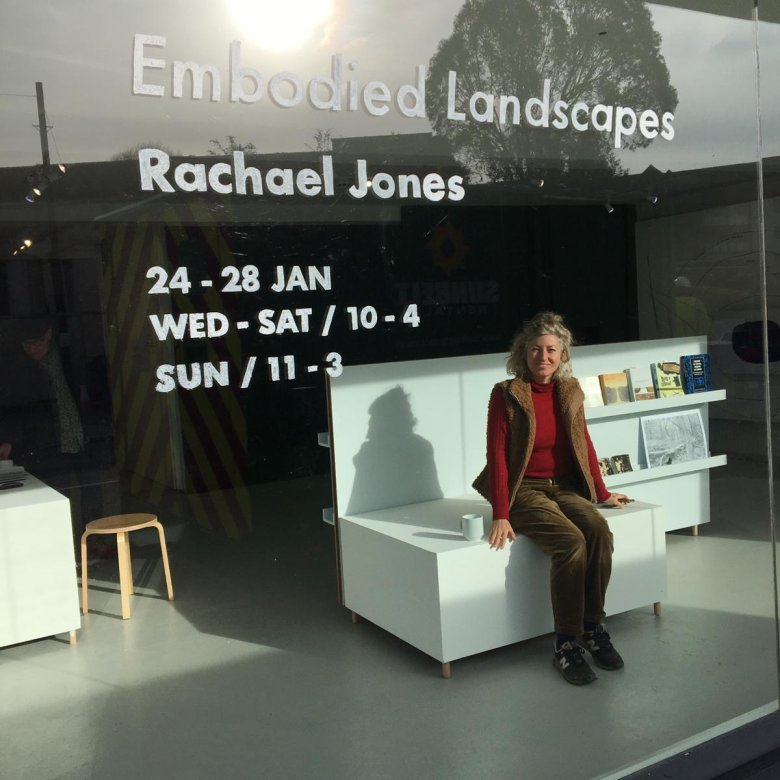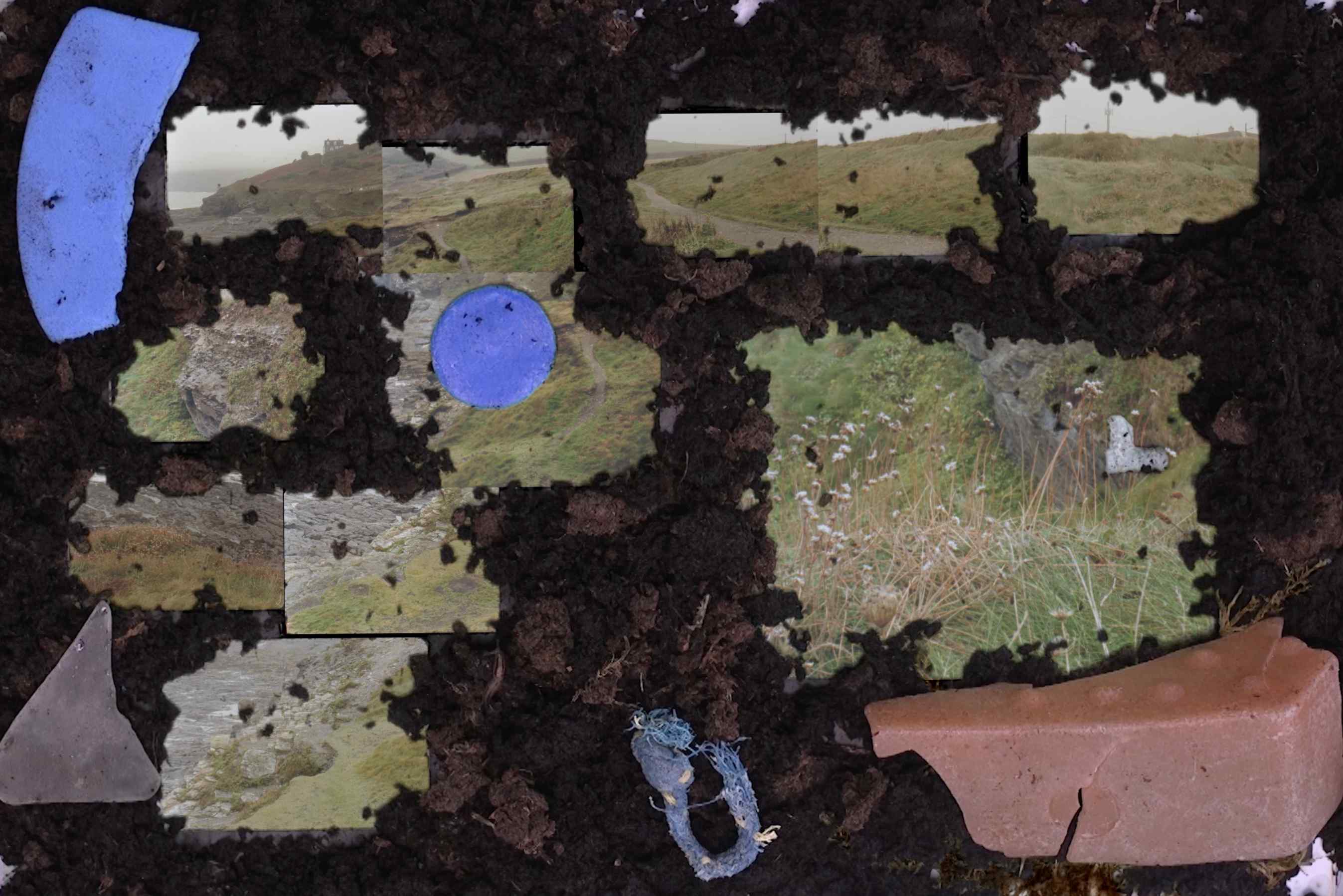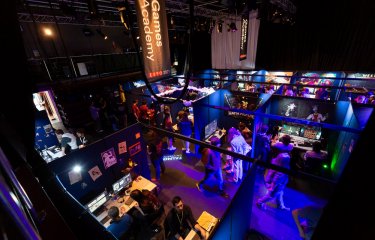Finding a path for applying AI to creative practice
31 October 2024

This article was written by Research Associate, Dr Rachael Jones.
As a creative person, specifically, a filmmaker who aligns herself with artistic and experimental moving image making, I find myself both concerned and excited about the possibilities of generative AI in creativity.
I can see its potential to enable creative content, ideally making creative production more accessible using AI tools. But I can also see that an overuse - or perhaps misuse - of AI could cut people off from an important aspect of the creative process, zooming even faster towards end products with less messiness and less getting stuck along the way. Arguably, that ‘murky sticky’ creative space is one that lots of people would love to skip over, but for me and others I’ve spoken to about their own creative processes, it seems like an essential part of it.
My own practice lives in that (often) stuck place; where I make mistakes, spill things and get distracted. However, I also experience intense satisfaction and reward when things eventually come together in a way I never could have imagined. I genuinely feel a spark of delight when sound and image connect in a way I hadn’t intended or planned. This tuning into slower processes can form a rich and fertile ground for creative ideas to grow. My fear is that this processual space becomes diminished and shortened with the introduction of AI in creativity, obstructing a deeper creative experience that can otherwise be achieved.

But perhaps not: could AI be treated as just another tool allowing more people to access the possibilities of creative practice?
A tool can hone the attention for conscious making, leading to purposeful action. A tool, in my case, includes: a pen, a camera, digital software and sometimes my phone. But when I absent-mindedly open my phone and go on social media, I’m allowing a stream of disparate information to passively enter my brain, putting my attention in a suspended state. When this happens, I can feel manipulated and out of control of my emotional responses. Or I may feel nothing, as my thoughts have been occupied for the past 10 minutes and I can’t say exactly what was holding my attention.
My attention should be mine to hold. What was intended as a tool - in this case, the phone – loses its value as a tool when it is used without direction or purpose. With respect to creativity, I question the benefit of a tool when it is put to use for efficiency over its potential to access transformative insight – where does the learning or spark happen when we use tools that allow us to skip over some of the creative process? That said, using tools to augment a creative workflow or remove difficult blockages can help take creativity to the next level and still encourage those sparks of inspiration, maintaining spaces for happy accidents to occur.
Perhaps it’s useful to consider why we’re using a technology before jumping in headfirst. Although there are clearly tensions between agency and efficiency, we can still be active participants, active in our intention and attention, while using AI tools. AI can be used by artists as another way of provoking and questioning culture and society. With a background in computer science and ethical concerns surrounding generative AI art and artistic appropriation, Melody Liu sees AI art as a tool that can empower artists and help them focus on being creative. She recognises the ability for AI to empower creativity when it is used interactively in the process of making, for example, when it can preview and idea before the artist commits paint to canvas. Even using ChatGPT, there is a degree of intent and creativity in how prompts are framed to achieve the most relevant or intriguing results.
Humans are extremely susceptible to suggestion, which is why 100 or so years of advertising continues to have an overwhelming effect on our behaviours. AI ethicist Nita Farahany questions whether true self-determination is even possible in a world where actual self-controlled choices are becoming less common with algorithms feeding us content and shaping our behaviours. Invisible forces threaten to creep into our bodies with neurotechnologies that can read brain activity. With the speed at which AI is accelerating, it is almost impossible to implement appropriate regulations and governance at equal speed, because as former board member at OpenAI Helen Toner suggests, policy makers are not good at agile policy making.
But you don’t have to be a scientist or engineer to have a voice, Toner insists. The decision belongs to the consumer to make careful choices so that they are the ones leading and not being led. That’s not to say that it isn’t the responsibility of institutions and policy makers to determine ethical use, but that we should recognise our agency to steer AI technologies in a direction to move away from manipulation and control over individuals. As creatives, exercising careful attention on our activities and choices can help deepen the creative process, whether AI tools are being used or not. And even if we decide not to use AI tools, knowing why we don’t want to use them is still exercising agency and autonomy.
When I make a film, I limit my choice of tools so that I can dive deeper into the creative process. Placing a constraint on choice encourages attuned awareness, as having fewer decisions to make beforehand can engage the process of actively making sooner.
Perhaps creatives who want to use AI can exercise it in a similar way: consciously treating it as a tool to enable rather than curtail the process of making. In addition, choosing when in the creative process to engage an AI tool and limiting the extent to which its being used. So instead of abdicating our ideas and attention to yet another gadget (or worse, data thief) we can inform ourselves ethically so that we can act responsibly without losing the valuable insights that can come out of a thoughtful and attentive creative process.
__
Dr Rachael Jones is a filmmaker-researcher, and research associate for Charismatic.ai. Rachael’s practice explores the use of tools and material objects for active looking and creative engagement. Often extending her practice to involve others in the filmmaking process, her films and writings are made up of multiple playful assemblages that rely on collaboration.




